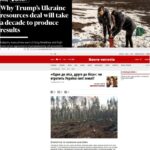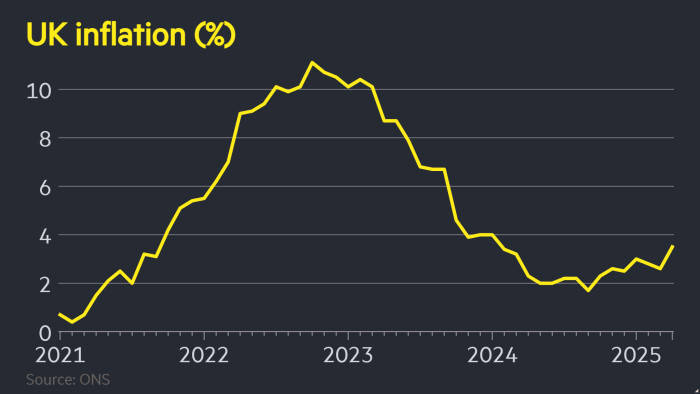Mexico uncovers new ‘death camp’ as pressure on president rises
Relatives of missing Mexicans have helped to uncover for the second time in two months a “death camp” run by a brutal drug cartel, piling pressure on President Claudia Sheinbaum to tackle a two-decade crisis that has left 120,000 people missing.
Carmen Sepúlveda and fellow mothers of missing people learned in recent weeks that authorities had found the remains of 42 people in Colima state — one of the largest mass graves made public in Mexico in years.
Authorities had, in fact, discovered the site 18 months ago and prosecutors finished their forensic work a few months later, while officials repeatedly refused to give the search group information on their findings.
That changed in March, when public outrage exploded after activists in Jalisco state unearthed charred bone fragments and more than 1,000 pieces of clothing on another narco ranch, pointing to what activists began calling a “death camp”.
The new site in Colima, western Mexico, is far larger. Authorities found corpses still burning in an area of more than 40 hectares that was scattered with human remains, some possibly torched using chemicals. Both camps were run most recently by the notorious Jalisco New Generation Cartel.
Sepúlveda recalled that when she and other parents of missing people first heard about the site: “We said ‘That’s where all our children are’.”
The Financial Times has pinpointed the location of the ranch after activists shared directions from the town of Agua de la Virgen. A Mexican security official then confirmed the exact location via satellite imagery.
“That area is infested with guys from the Jalisco cartel in armoured cars,” said the security official, who asked not to be named for their safety. “They would bring people up” to the ranch “to torture them and then bury them — to sow them in the soil”.
Hearing the prosecutors’ gruesome findings marked a rare step forward for Sepúlveda. She has been searching for her son, Carlos Donaldo Campos, since 2018, when he disappeared aged 23. She now also represents the Network of Missing People in Colima.
“It’s been a constant battle with the authorities,” she said. “Everyone used to say there were no disappeared people in Colima”, but “we haven’t stopped finding [bodies]”.
Narcos began regularly “disappearing” ordinary Mexicans after the government declared all-out war on the cartels in the 2000s. Some victims are recruited to work, while others are killed and their bodies burned or buried in unmarked pits. Tens of thousands of corpses have been discovered but never identified, and now lie in morgues and mass state graves.
With authorities too under-resourced, afraid or even complicit to act, brigades of mothers with spades scour the country for their missing children. They have become fearless critics of the Mexican state — and a potent symbol of government failure.
Federal authorities finally began working with activists such as Sepúlveda after images of abandoned shoes and clothes at the site in Jalisco were beamed across the world. The government has tried to downplay the pictures of what they said was a camp for training rather than extermination, and said that recruits had to abandon their clothes in favour of uniforms.
But the security minister acknowledged that unwilling recruits to the cartel were tortured and killed. The attorney-general said very small fragments of human remains were found, some with signs of “some kind of cremation”.
President Sheinbaum tried to quell the uproar with a new plan to tackle the disappearance crisis, and her team met with activists in April. Sepúlveda and others pressed them for answers about Colima’s Guamúchil ranch, which they had not been allowed to access since learning of its discovery in December 2023.
Weeks after the April meeting, the Attorney General’s Office finally shared some information.
Only three of the 42 people’s remains — most of them belonging to men aged 25 to 39 — had been identified in a year and a half since the site was found. Just over 40 per cent of the remains had been burned, while other body parts were simply buried.

Hearing the grim findings felt like “the lesser of two evils”, said Sepúlveda. “We were able to turn the pages of the cases ourselves, see what they saw, what they had worked on and how.”
Despite the security risks, Sepúlveda and other activists drove to the entrance of the ranch last year but were denied entry. It felt very unsafe and “very remote”, said Blanca Estela Ramírez, one of the activists.
Federal authorities found the site in Colima’s rolling hills as part of a broader investigation into the disappearance of a human rights lawyer and an Indigenous activist. No media or activists have been allowed in and no photographs of the site have previously been published, nor has its exact location been disclosed.
Federal authorities had known about the ranch since at least 2018, when they arrested a high-profile alleged trafficker there. They accused him of moving drugs to the US and killing a former Colima governor. The detainee was murdered in prison days later and criminal groups continued using the site.
“What’s very discouraging is that the Mexican state identifies this place, and even makes arrests, and the place keeps operating,” said Jacobo Dayán of Ibero-American university in Mexico City. “They never dismantled the network.”

Investigators believe the ranch was originally used by the Sinaloa Cartel, then taken over by the Jalisco New Generation Cartel.
“The groups think, ‘Well, if one organisation hid bodies here and the authorities never came along, it’s an area we can use now,’” said Víctor Manuel Sánchez, of the Autonomous university in Coahuila. There could easily be more victims: “It’s a bigger plot with more vegetation where potentially there are more places to hide bodies,” he said.
Mexico’s forensic units are overwhelmed — some have years-long waiting lists to identify corpses. Even if no one else disappeared, they could not solve the existing cases quickly, said Sánchez.
“This crisis is for the long haul,” he added. “It will take years of work.”
Colima, Mexico’s smallest state by population, has become a disappearance hotspot, with the country’s highest homicide rate. But it is tucked away in western Mexico, far from major cities and media attention. Activists have few answers about their loved ones’ cases, but believe many of the disappearances relate to forced recruitment.
“The boys don’t go of their own accord, they go under false pretences,” said Ramírez, whose brother Juan Manuel disappeared in 2018.
Sepúlveda is still searching every corner of the state for her son. She spent Easter watching authorities dig up bodies that had likely been mutilated after death, a common practice that the mothers have struggled to understand.
“Honestly, we’ve asked ourselves a lot, when we’re in the graves, we all ask why,” she said. “How can a person, a human being, do so much damage to another human?”
Cartography by Aditi Bhandari








